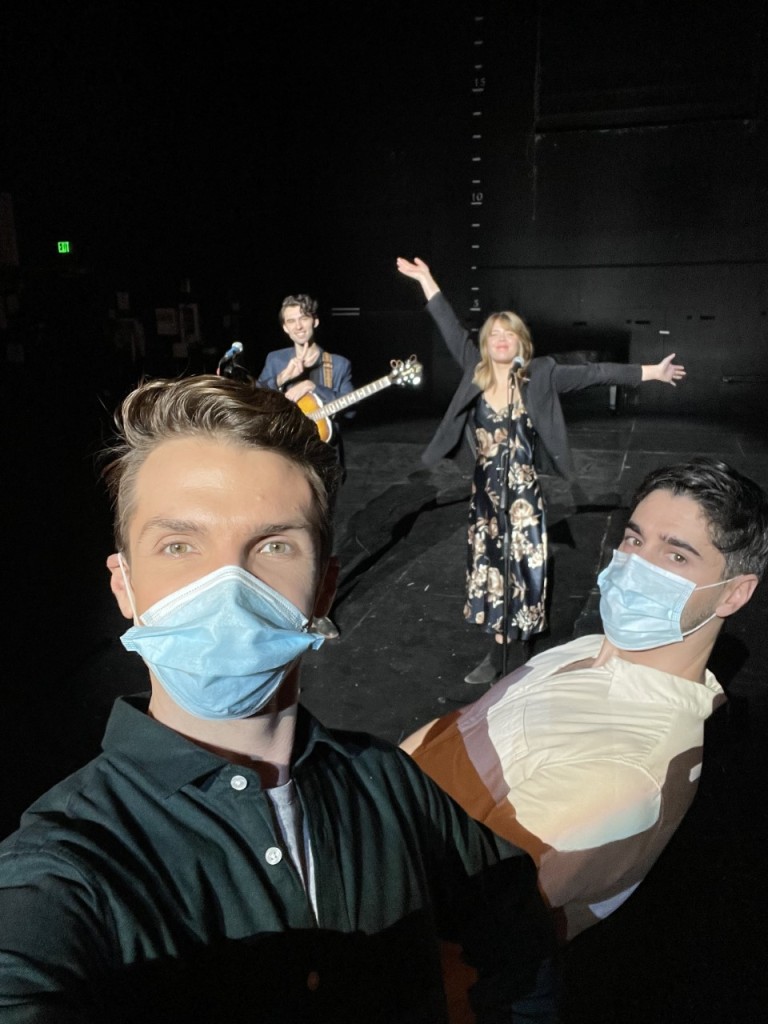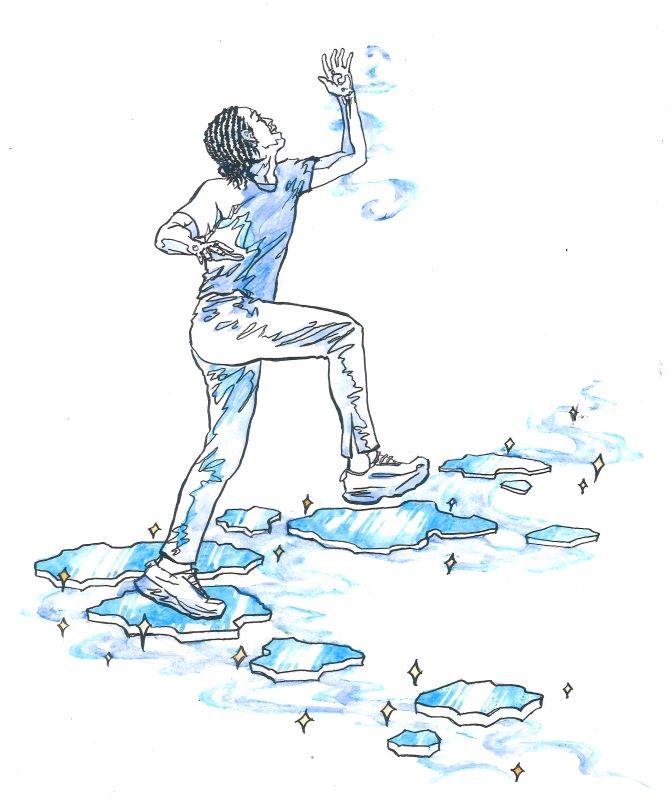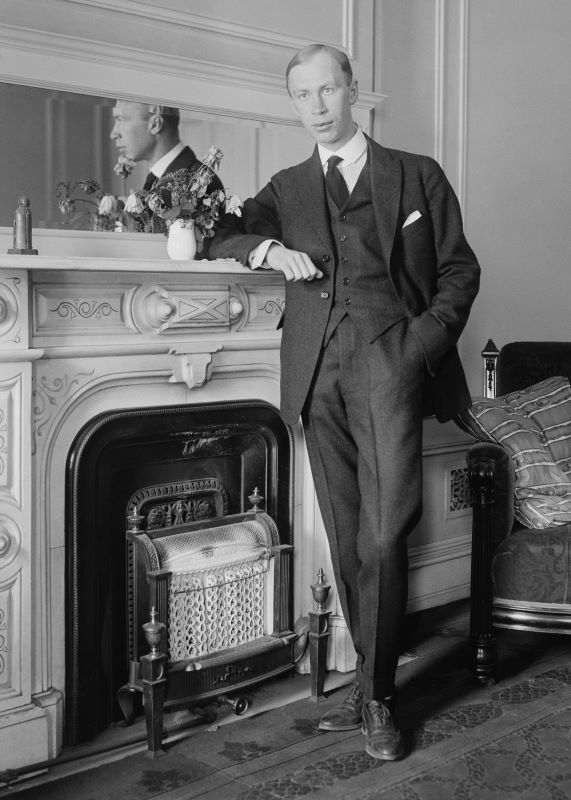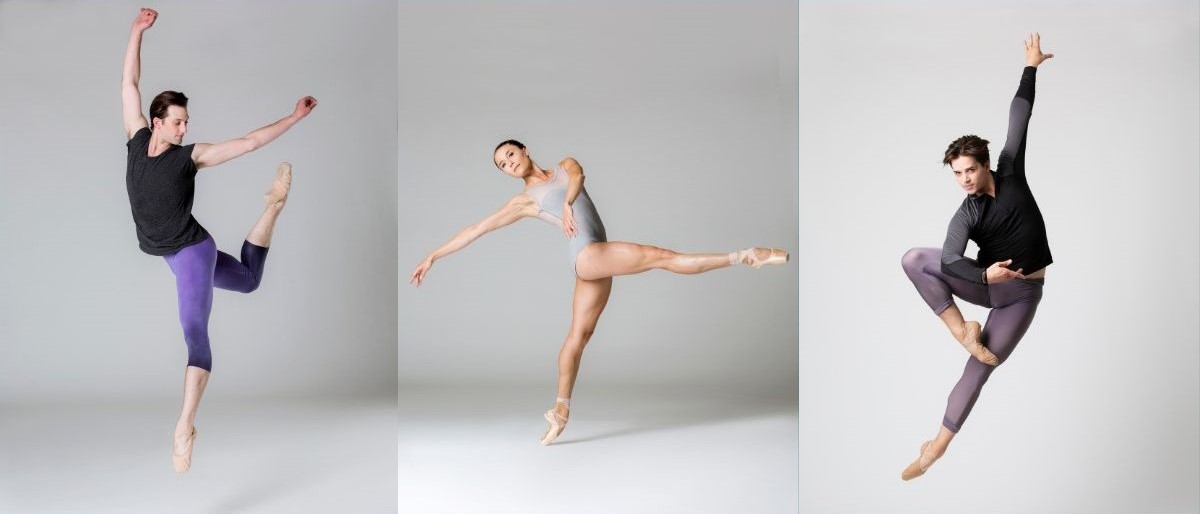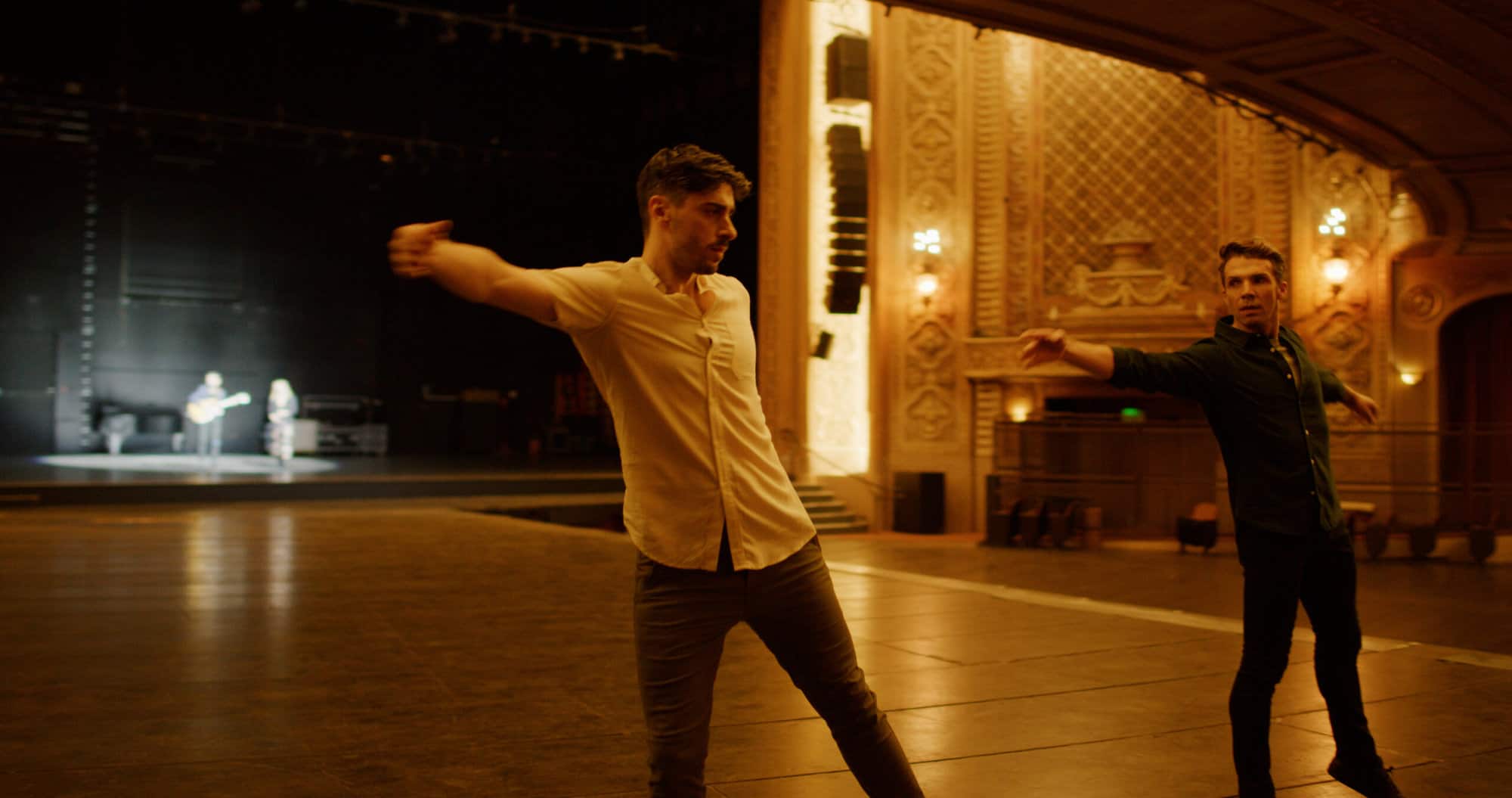
Principal Dancer Lucien Postlewaite’s recent collaboration with local Seattle folk/pop band Fretland brought together a wealth of musical and performance artists from multiple disciplines and organizations. Filmed at The Paramount Theatre in downtown Seattle, the music video highlights empty arts spaces, and the longing we all have to be back in those theaters and performance halls. We recently “sat down” with Lucien on Zoom to chat about the process and how they put together the pieces during this global pandemic. Scroll to the bottom of this article to watch the music video in its entirety!
How did you get involved in this project?
Stephan Bourgond, my other half, is the chef at Paragon on Queen Anne. He recently launched their Supper Club, where they live stream musicians from the dining room of the restaurant to guests in their homes. Fretland was one of the bands chosen to do the live stream, and a few weeks after their first one they approached Stephan and asked if we’d like to collaborate on a music video. We had an initial meeting with Hillary Skalsky, the band’s lead singer and front woman, and she gave us an idea of what she was thinking. We were really excited about the idea, obviously, and asked if we could bring in some other people we trusted to work on the project. She was open to Bruno Roque, Noelani Pantastico’s husband, doing the choreography, and we also recruited Henry Wurtz, a filmmaker who often collaborates with PNB and Seattle Dance Collective, to do the filming. From there we started having regular meetings as a creative team to talk about what we wanted the video to look like.

What are some of the logistical pieces that had to come together to get this project up and running?
The whole process was remote, so we held all of our creative meetings on Zoom. We ended up using the Paragon dining room, which was empty, for rehearsal with Bruno. They’re in “takeout mode,” so the dining room is basically cleared, and works well as a rehearsal space. We used the sound system for the restaurant, so it was way better than just being in our apartment.
The project had synergy from so many different realms. The original idea of the video was to show the emptiness of theatre and performance halls. Hillary wanted to highlight the tragedy that we’re all dealing with as performers: not having an audience. Even though we’ve transitioned to digital spaces, we’re missing that in-person connection. I wanted it to look “big,” and as expensive as possible, even though there was essentially no budget to speak of. We started researching spaces, and I reached out to Peter Boal on a whim to see if he had any connections with theatre groups that might be wiling to work with us. Peter connected me with Josh LaBelle, Seattle Theatre Group’s executive director, who in turn connected me with his team. They were welcoming to the whole idea, and wonderful to work with.
All the arts organizations are hurting so much, so it was a joy to be able to share some positive news. A lot of the dialogue was surrounded by messages like “sorry I haven’t been able to get back to you, we’ve had to do more layoffs,” but it felt like our project was an infusion of positivity. We originally were hoping to film in The Moore, and then Nadia Kaboul Quitslund, STG’s booking and sales manager, asked if we wanted to use The Paramount, which we of course did. We may not have a ton of leverage as artists, but we are able to give these spaces visibility, and try to keep them vibrant in this time. When we did our first site visit, Mason Sherry, the theatre manager, was telling us all these stories about the history of the Paramount, and just walking through that theatre felt amazing.
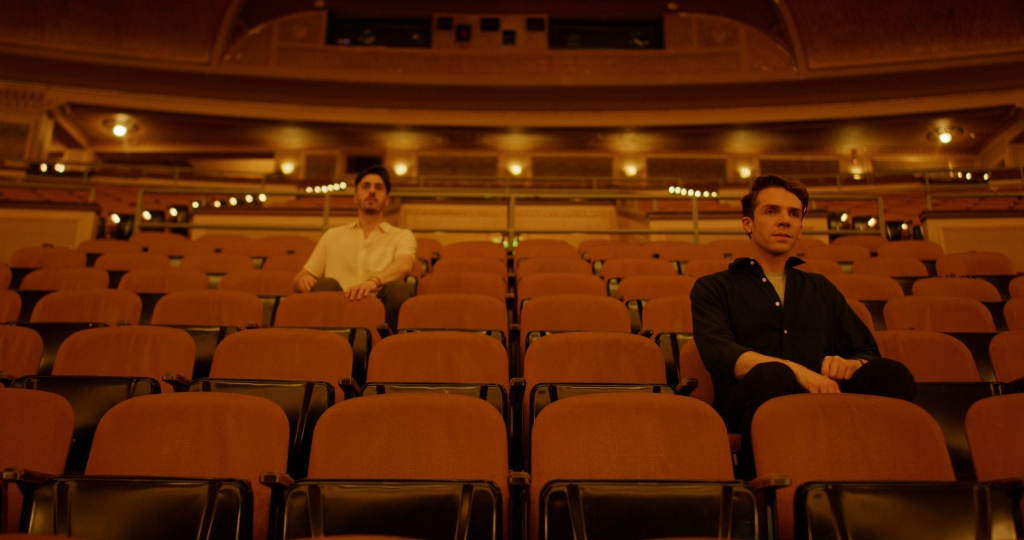
What is your process for collaborating with so many artists and organizations?
Fortunately, Stephan and I have worked with Seattle Dance Collective, Noelani Pantastico and James Moore’s company, several times, so we’re used to these types of collaborations. We already had a process, and both Bruno and Henry had worked heavily in that process. As far as the band, it was a lot of Zoom meetings. We found a way to stay pretty separate during the filming itself, which made it easier – the band was on stage and Stephan and I were in the audience. Stephan and I sort of represent ghosts of the public, or souls trapped in a theatre, and the band represents the echo of performers on stage. The video opens with us entering the space and the band singing to nobody. We wanted to play, without being too literal, with that idea of emptiness, juxtaposed with intense connection.
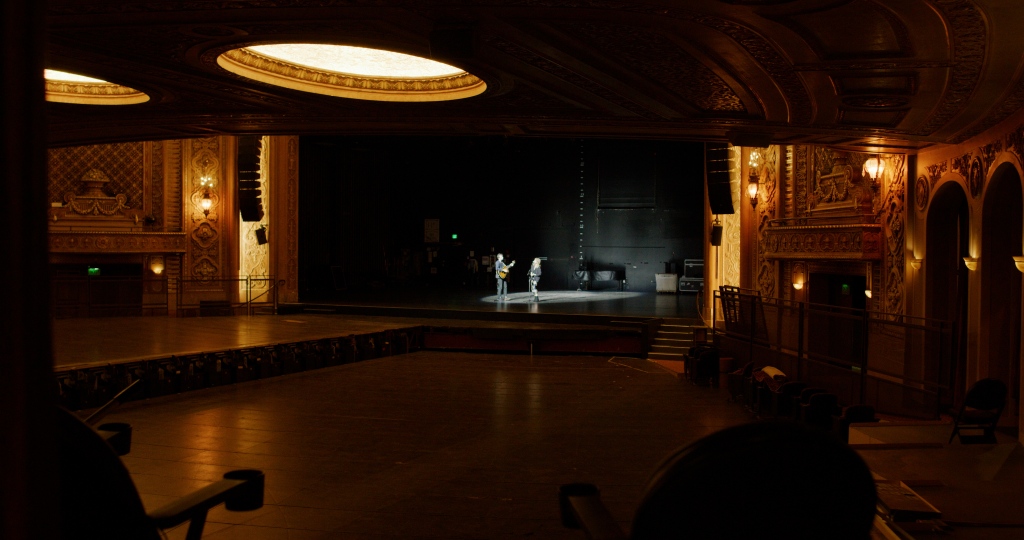
What are some of the highs and lows of doing this work during a pandemic?
It’s a high that we got to do it at all! Everyone was grateful to be involved, to have something to do. I don’t think any other circumstances would have allowed us to create something of this scale at The Paramount. If this were a normal year, I don’t know that my schedule would have allowed me to be involved. We were able to bring together a lot of people, who are really skilled at their crafts, who might not otherwise have had the time – especially for what was basically a passion project.
As for a low? I’m not sure. I feel like at this point I’ve gotten used to Zoom and all that entails. If I focused on the lows, or let those stay with me, it would be too hard. The people who are succeeding in this circumstance, I think, are the ones who are trying not to compare to what things were “before.” I’d rather say, “ok, we’re gonna take this hurdle, what do we need to overcome it?” Don’t get me wrong, I definitely still have my moments where I experience a whole lot of grief. This sucks. But this is my reality right now, and I’m going to make the best of it.
I don’t think I would have had the confidence, or felt pushed to be involved in this way, were it not for this time. I took a really active role in booking the theatre, bringing a lot of people together, and being that conduit to make a lot of things on this project happen, and I’ve never done that before. It gave me confidence to think about creating a filmed piece for Next Step, PNB’s choreographers’ showcase, and gave me a way of thinking about other forms of creativity. For me, dance has been the vehicle for my creativity, but now I know that if I don’t have dance it will come out in another way. So that’s reassuring, especially at this time in my life when I’m considering what I may do next. It’s helped me build trust in myself.

What’s it like dancing for camera instead of live on stage?
It gets to me a little bit, having that headspace when I’m dancing for camera. I’m used to just going out, performing, and that’s the end. But with all of these takes it’s hard not to get in your head. I’ll do a step and as I’m finishing it think “oh, next time I want to think about this.” It is a different skill. It feels much more technical, in a way, and I’m able to play with little micro-adjustments. We did a lot of this at Les Ballet de Monte Carlo in Monaco, too. You give a little something different with each take.
How has the project grown and changed since you started talking about it in November?
It’s been really fun watching it evolve. We were originally going for a more literal narrative with Stephan and I as actual ghosts searching for each other throughout the theatre. But when we saw the footage, it didn’t work that way. We only had the theatre for one eight-hour day, and we captured everything we could, but didn’t really know how it was going to read on camera. So it’s been in the editing that we’ve really found the story.

I think now it represents our ideas even better. And that’s what gives me confidence for doing Next Step – I’ve worked on a few projects like this and know the process. I’ve realized that even if there’s a part that isn’t choreographically very interesting, I can edit it in a way that masks it. It makes me think about the things that I’m consuming and how curated they are, the work that goes into them. Behind any project, video or otherwise, there’s someone who’s making those choices. I’ve always been on the other end of those choices as an artist, I get the steps given to me. So to be at the origin is a different and eye-opening experience.
Video Stills courtesy Henry Wurtz, Behind-the-scenes photos courtesy Lucien Postlewaite

